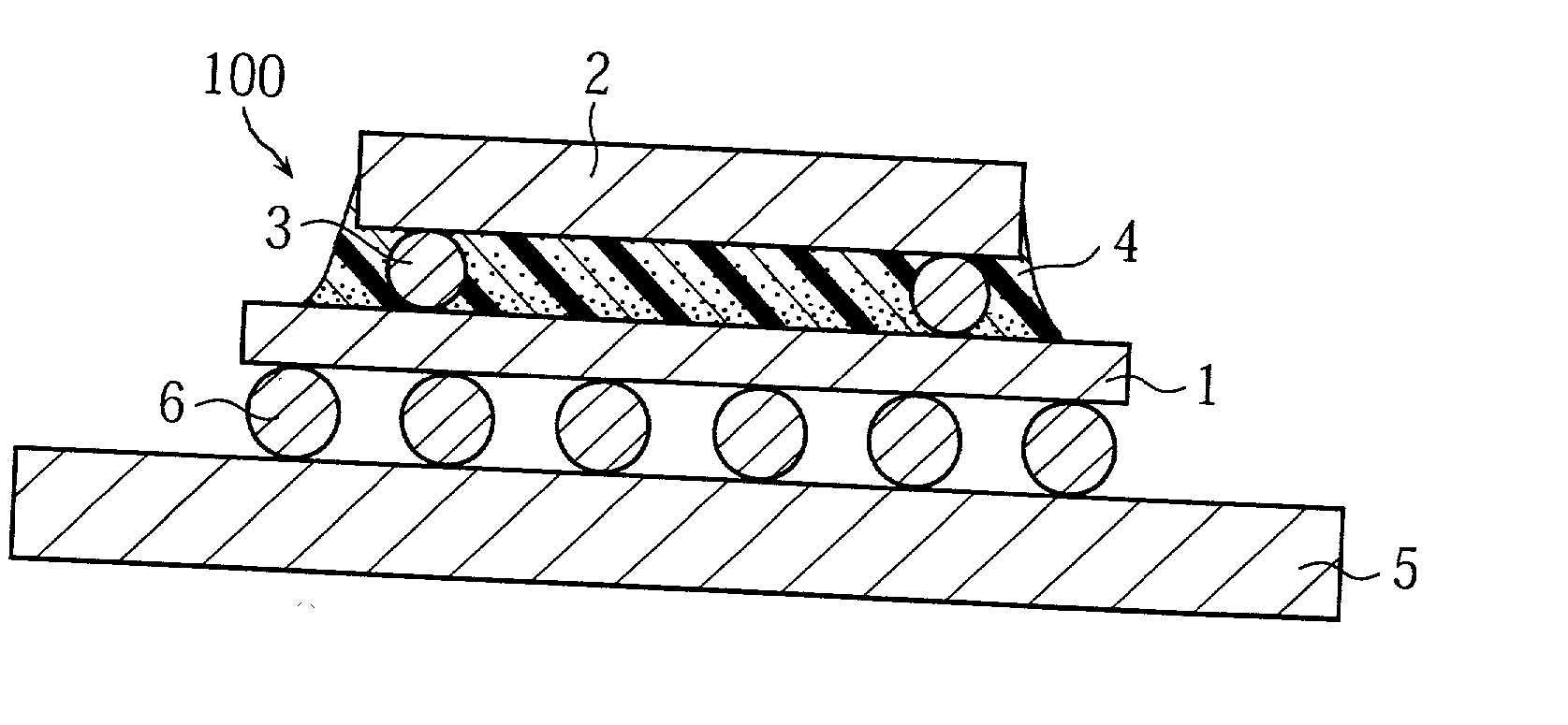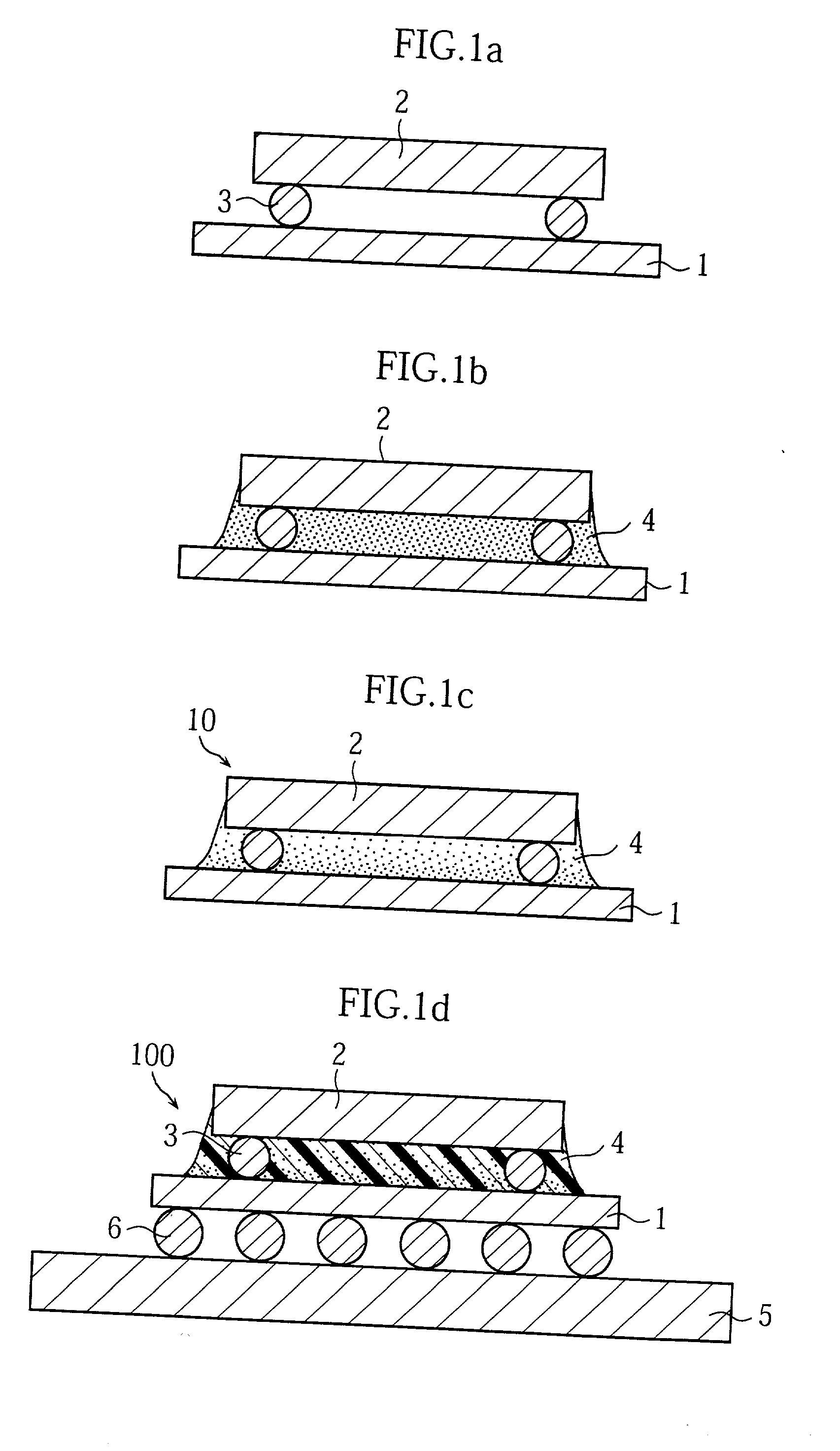Semiconductor device and method of making the same
a semiconductor and chip technology, applied in the direction of semiconductor devices, semiconductor/solid-state device details, electrical equipment, etc., can solve the problems of chip electrode damage, adhesive sealing cracks and/or release from the substrate and/or the chip, and solder bumps that cannot be expected to be detached from the electrodes
- Summary
- Abstract
- Description
- Claims
- Application Information
AI Technical Summary
Benefits of technology
Problems solved by technology
Method used
Image
Examples
example 2
[0041] A sealing adhesive composition was prepared in a manner similar to Example 1. The difference of the sealing adhesive composition of Example 2 from that of Example 1 lies in that the proportion of bisphenol F resin (EXA-830 available from Dainippon Ink and Chemicals, Incorporated) was reduced to 75 parts by weight, while 25 parts by weight of naphthalene resin (HP4032D available from Dainippon Ink and Chemicals, Incorporated) was further added as a third main resin ingredient. Subsequently, in a manner similar to Example 1, the differential scanning calorimetry and the measurement of glass transition point, gel time and viscosity were performed. Further, samples of chip-substrate assembly each including an adhesive sealing formed of this resin composition were prepared and checked for thermal stress influences, settlement of inorganic filler, temperature cycle resistance and humidity resistance, in the same manner as in Example 1.
[0042] In the differential scanning calorimetry...
example 3
[0043] A sealing adhesive composition was prepared in a manner similar to Example 1. The difference of the sealing adhesive composition of this Example from that of Example 1 lies in that the proportion of bisphenol F resin (EXA-830 available from Dainippon Ink And Chemicals, Incorporated) was reduced to 50 parts by weight, while 50 parts by weight of naphthalene resin (HP4032D available from Dainippon Ink And Chemicals, Incorporated) was further added as a third main ingredient. Subsequently, in a manner similar to Example 1, the differential scanning calorimetry and the measurement of glass transition point, gel time and viscosity were performed. Further, samples of chip-substrate assembly each including an adhesive sealing formed of this resin composition were prepared and checked for thermal stress influences, settlement of inorganic filler, temperature cycle resistance and humidity resistance, in the same manner as in Example 1.
[0044] In the differential scanning calorimetry, t...
PUM
| Property | Measurement | Unit |
|---|---|---|
| peak temperature | aaaaa | aaaaa |
| peak temperature | aaaaa | aaaaa |
| temperature | aaaaa | aaaaa |
Abstract
Description
Claims
Application Information
 Login to View More
Login to View More - R&D
- Intellectual Property
- Life Sciences
- Materials
- Tech Scout
- Unparalleled Data Quality
- Higher Quality Content
- 60% Fewer Hallucinations
Browse by: Latest US Patents, China's latest patents, Technical Efficacy Thesaurus, Application Domain, Technology Topic, Popular Technical Reports.
© 2025 PatSnap. All rights reserved.Legal|Privacy policy|Modern Slavery Act Transparency Statement|Sitemap|About US| Contact US: help@patsnap.com


